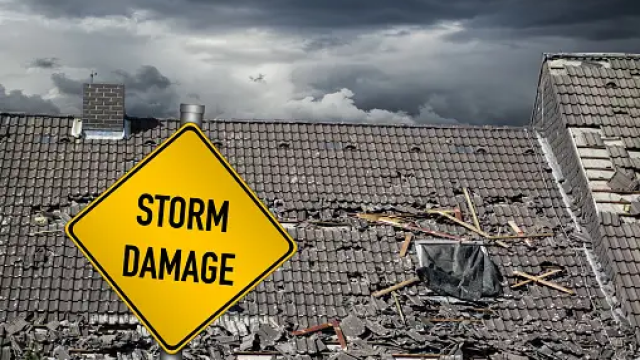All too often we focus on what the federal government is doing to build disaster resilience. Federal grant funding, though sizable and growing is only one piece of the resilience puzzle. A recently published academic study and a new state-level grant program point to progress made by other stakeholders to incentivize hazardmitigation investments.
Alabama mitigation study
Researchers from the University of Alabama, Auburn University, and the University of Mississippi collaborated on a study that empirically demonstrates the value of hazard mitigation investments to homeowners. Their peer-reviewed article published last month in the Southern Economic Journal, “Estimating the effects of wind loss mitigation on home value,” focused on roof construction in Baldwin County, Alabama.
Specifically, the study analyzed homes constructed to the Insurance Institute for Business & Home Safety – IBHS FORTIFIED Home standard. This engineering and building code standard is designed to reduce wind and wind-driven water impacts caused by hurricanes. Alabama requires insurers to provide discounts to the wind portion of their homeowner’s premium if their home meets the Fortified standard.
The results of the hazard mitigation investments are impressive.
- Lower insurance premiums: Fortified homes have 16% to 40% lower property insurance premiums.
- Higher resale value: Fortified homes sell for 6% to 7% more than other homes.
These are strong incentives for homeowners to invest in hazard mitigation. This is particularly noteworthy because this is not a federal program. It is a standard promulgated by a non-profit organization, together with a State statute linked to insurance premiums, and real estate market dynamics. The study’s findings demonstrate that a homeowner can be incentivized to invest in hazard mitigation even in the absence of federal funding.
Louisiana mitigation grants
Louisiana officials announced a $30 million hazard mitigation grant program for residential and commercial buildings last month. The grants will provide up to $10,000 to retrofit roofs to the Fortified standard, thereby making Louisiana homes and businesses more resilient to hurricanes. It is modeled on a similar grant program in Alabama that funded 6,000 homeowners to retrofit their roofs to the Fortified standard.
“When (Alabama) started offering grant money, they broke Taylor Swift’s record. They were out of funds within eight seconds of going live with the offer of grant money,” quipped Louisiana Insurance Commissioner Jim Donelon.
One difference is that the insurance industry funded the Alabama program, while the Louisiana program is state-funded.
Similar to what the researchers found in Alabama, Louisiana residents who retrofit or build their homes to the Fortified standard could save 20 to 52% on the wind portion of their homeowner’s insurance.
Senate Insurance Committee Chair Kirk Talbot acknowledged the disaster risks Louisiana faces and highlighted the State’s efforts to reduce the risks: “From the outside looking in, insurance companies around the country looking at Louisiana, we have really stepped up our building codes, which shows them that we recognize we have a problem. We recognize that we are a big target for hurricanes and named storms making landfall, and that we recognize that and we’re doing something about it.”
Future implications
The Alabama research study and Louisiana grant program exemplify the innovation necessary to make the nation more disaster resilient. And opportunities abound to extend these efforts to other stakeholders, as the Alabama study’s authors noted: “…policies encouraging home appraisers and financial institutions to reflect the marginal value of Fortified construction in home appraisals could amplify this effect.”
In other words, working with stakeholders such as appraisers and lenders could further benefit homeowners, communities, and the nation. The roles that all these “co-beneficiaries” of resilience, including governments and the finance, insurance, and real estate industries, can play is precisely the focus of our upcoming Resilience Incentivization 2.0 report.
Councils : MMC

